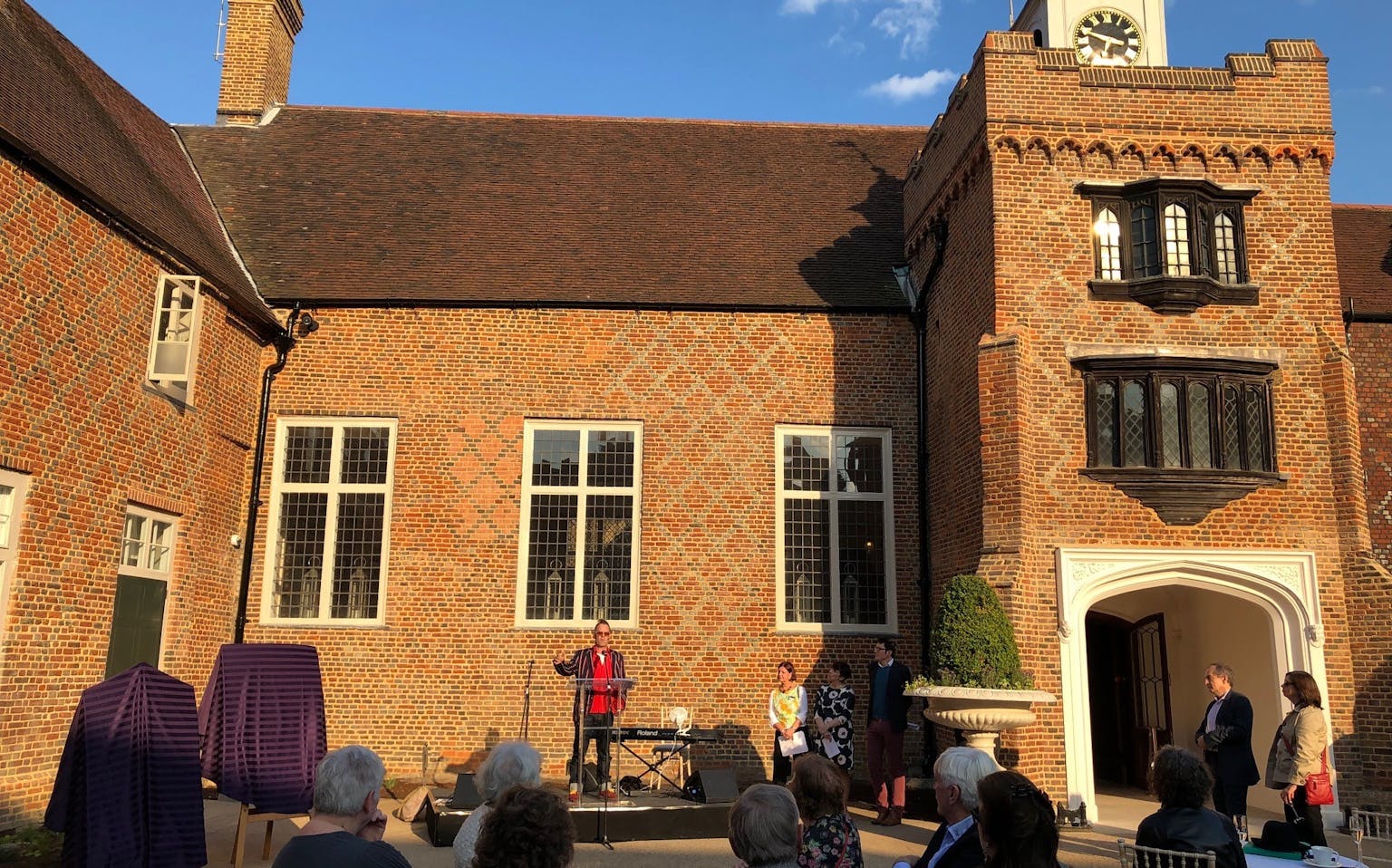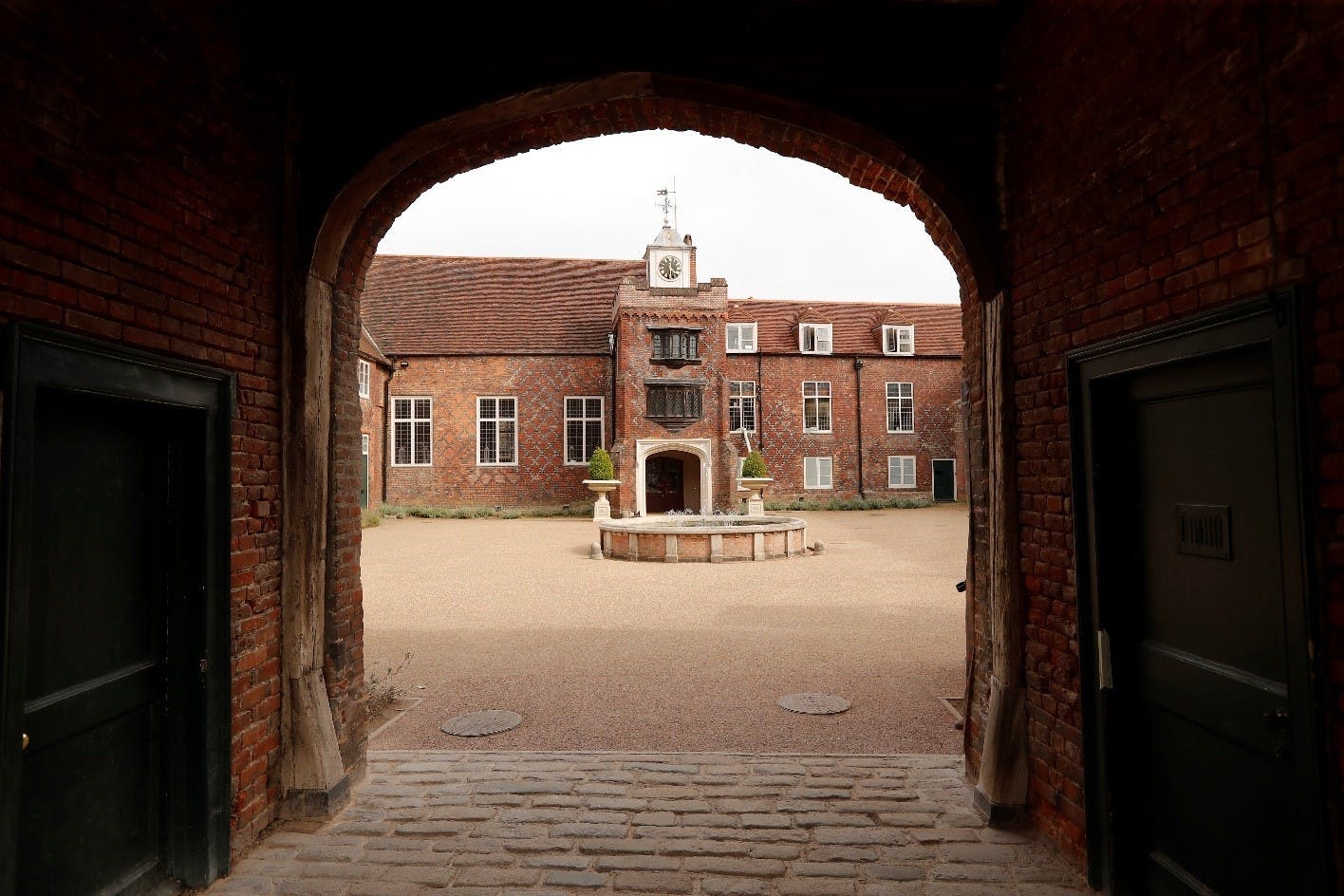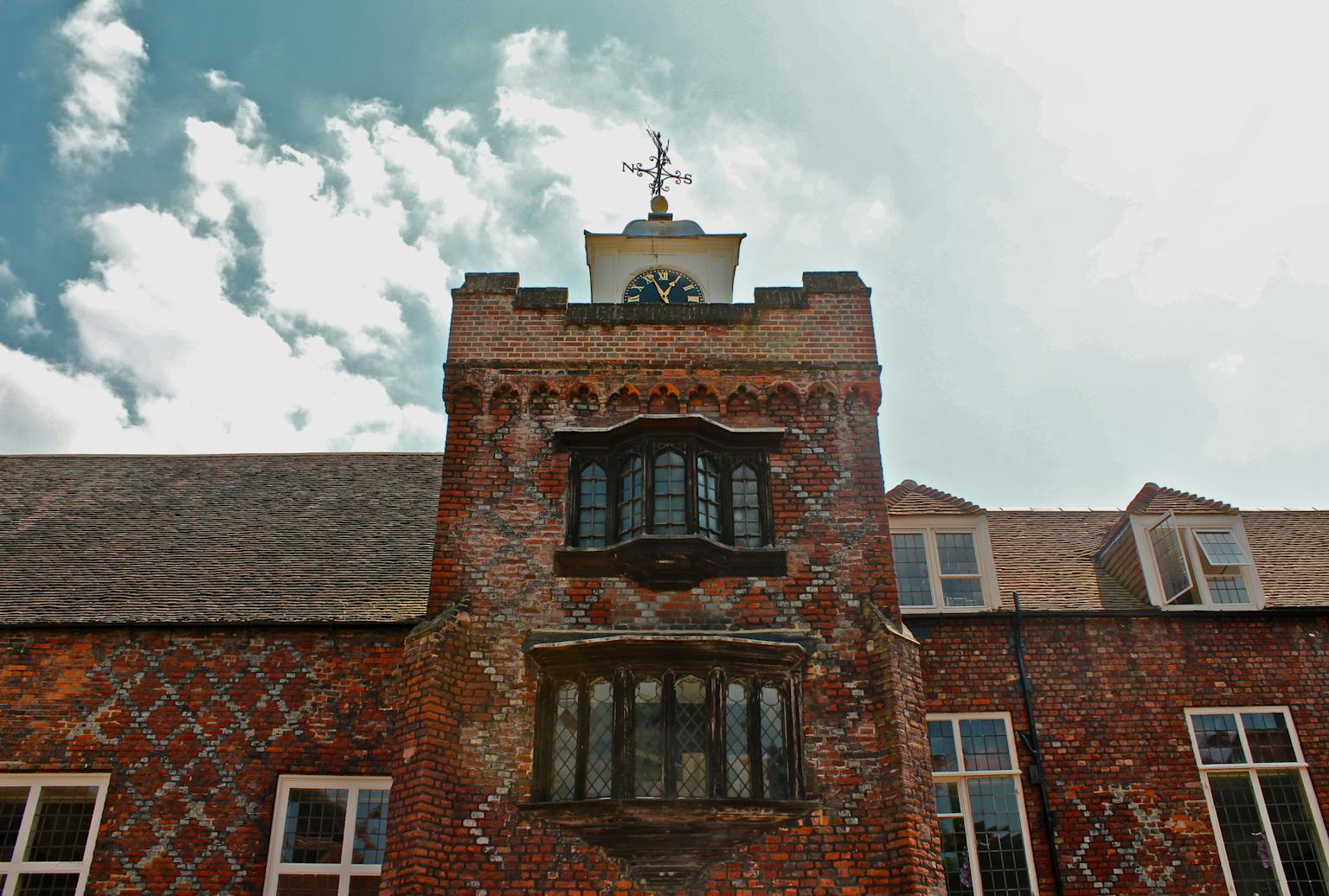Fulham Palace Reopens After £3.8m Restoration

Fulham Palace, South West London, has been restored and enhanced in a £3.8 million project designed by Purcell. Following press events this week, the Palace will reopen to the public tomorrow.
Home to the Bishops of London since 704, the Grade I-listed building is one of London’s outstanding examples of Tudor architecture. Purcell was appointed as architect and heritage consultant to the Fulham Palace Trust on the restoration and renewal project, which was funded in part by £1.9m from The National Lottery Heritage Fund. Purcell’s involvement began in 2015 following a successful Heritage Lottery Fund for the western part of the site.
Fulham Palace now features a new museum and commercial office spaces located within the newly transformed Tudor quadrangle, the oldest surviving part of the complex. The restoration has doubled the size of the museum, which has been completely reinterpreted and includes historic rooms never-before opened to the public. The visitor experience has been enhanced extensively by enabling continuous access and visibility throughout the site.
We took the opportunity to rethink the modern approach to the re-presentation of Tudor Brickwork. Based on analysis of surviving fragments of 16th century brickwork at Hampton Court Palace, we rediscovered ancient technologies and techniques of brick production, mortar mixing and jointing profiles. This involved production of bespoke hand-made bricks, use of hot-mixed lime mortars and a distinctive double-struck joint that shows off the brickwork and its characteristic diagonal diaperwork patterning to its greatest effect.

Internal spaces have been transformed, reinstating the historic plan and sensitively incorporating modern servicing to provide 21 century facilities while preserving and conserving important historic fabric.
The surrounding land, which is a Grade II*-Registered Park and Garden and Scheduled Ancient Monument, has been transformed, reinstating elements of the historic landscaping that date back to the 17th century pioneering botanist Bishop Compton.

The project marks a real change in the way Fulham Palace is enjoyed and understood for generations to come. We look forward to sharing the stories of the Palace, which was home to the Bishops of London for well over a millennium, with our visitors. This huge restoration project has really brought the soul back to the Palace and wouldn’t have been possible without a major grant from The National Lottery Heritage Fund as well as our core supporters and volunteers, all of whom I would like to thank for their support in helping us realise our vision for the Palace.
— Sian Harrington, CEO of Fulham Palace Trust
Fulham Palace is now repositioned as a beautifully preserved historic site showcasing the most up-to-date thinking on how best to conserve and represent 16th century architecture for a modern audience. It is ready to welcome a whole new generation of visitors with 21st century facilities and generate higher revenues to secure the sustainable future of this important site.
— David Hills, Purcell Partner
Fulham Palace will reopen to the public tomorrow, with the Palace hosting a Free Tudor Fun Day on Sunday where visitors will be encouraged to dress up, make music, create a May crown. The first temporary exhibition in the new museum will celebrate the archaeological finds unearthed during the restoration project and celebrate the contribution made by volunteers in the restoration process.


